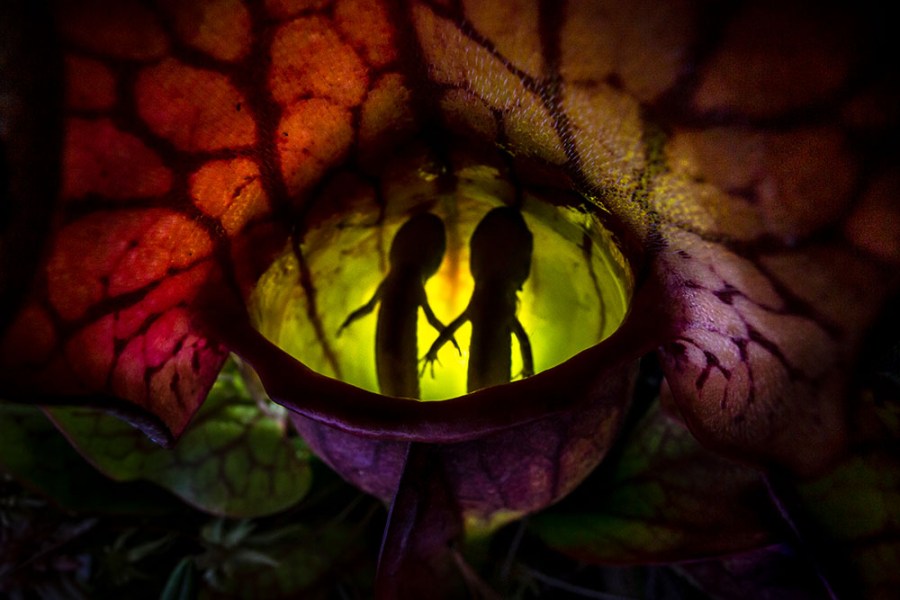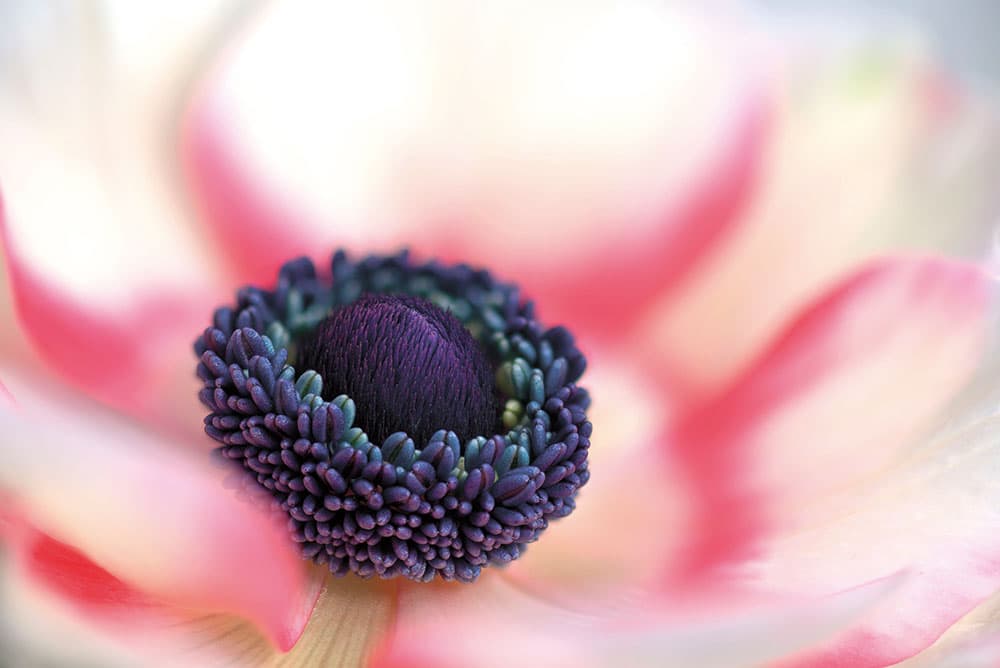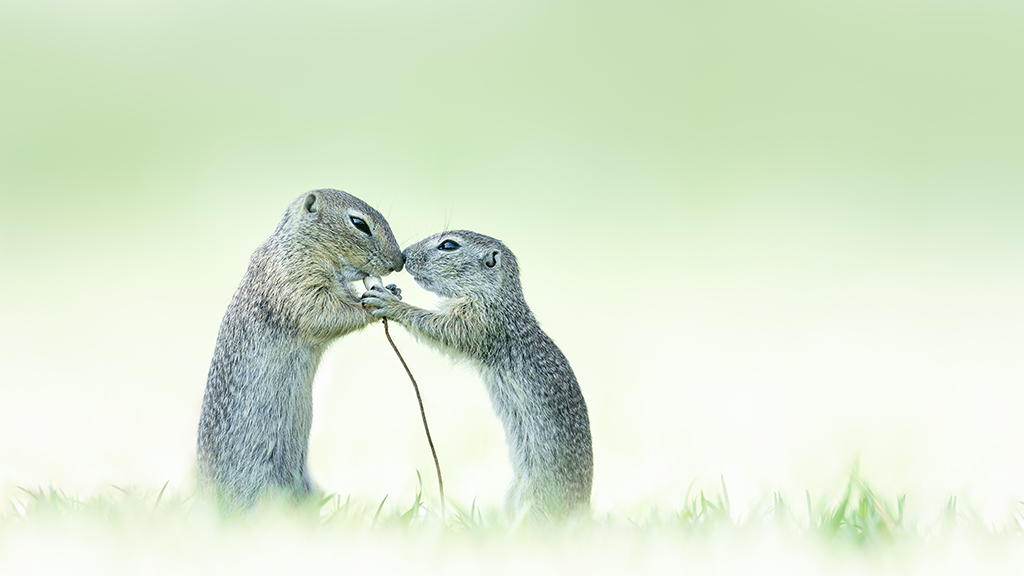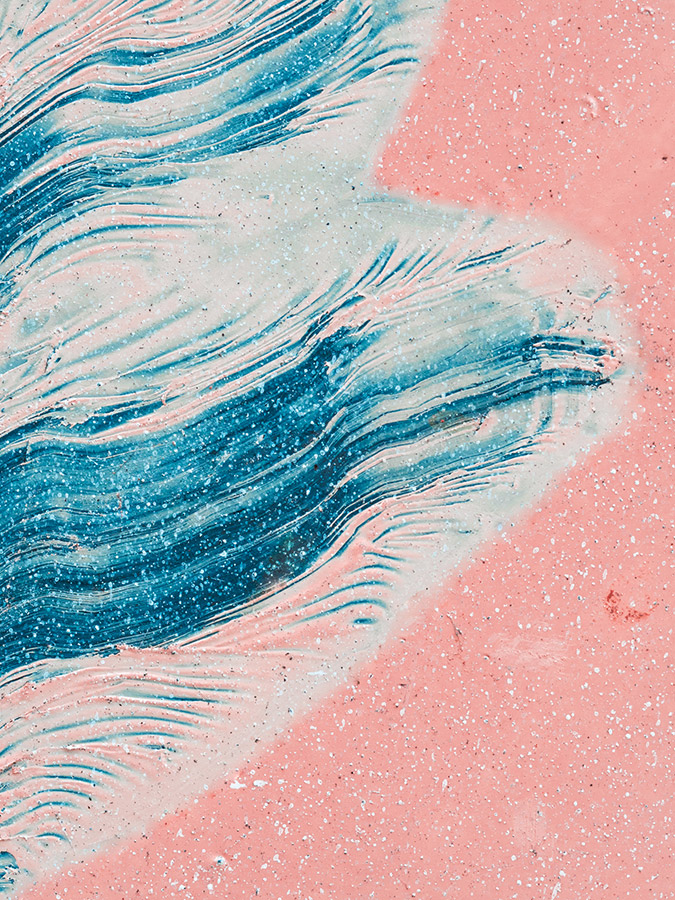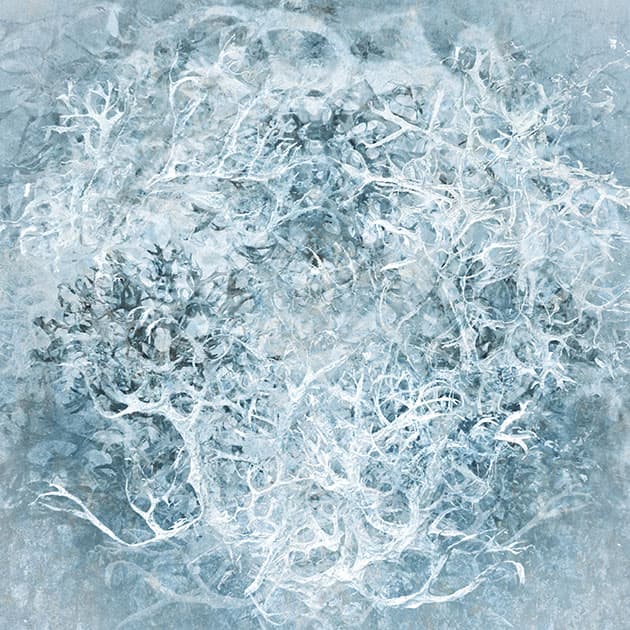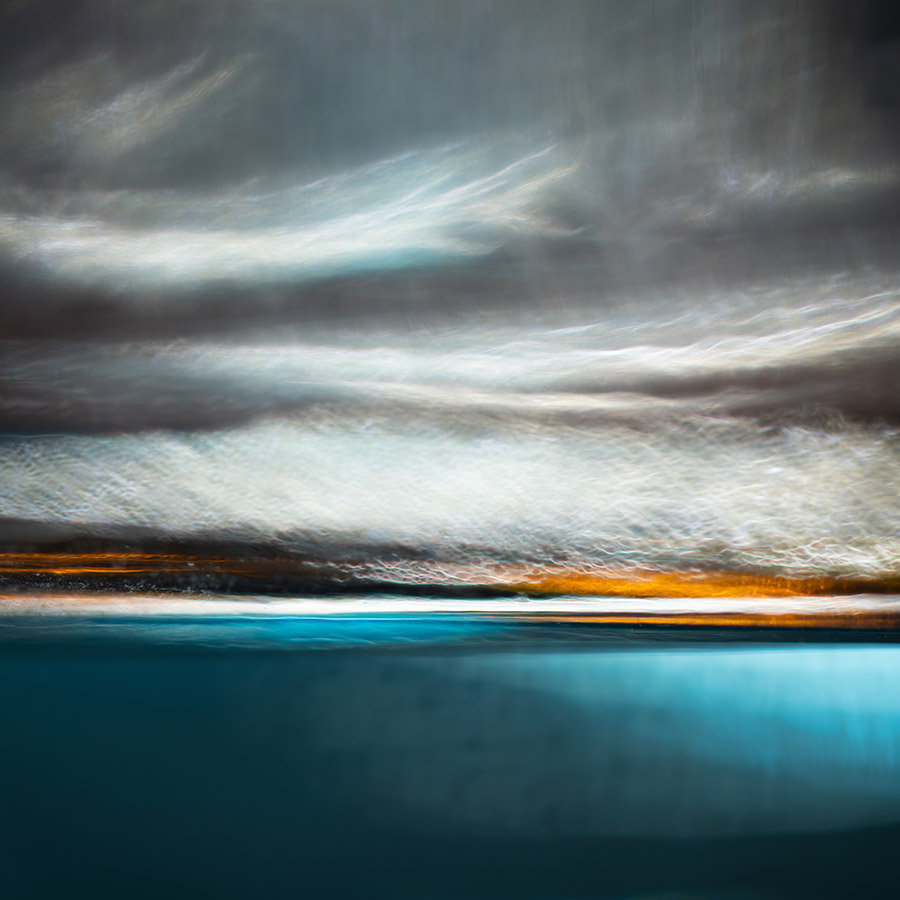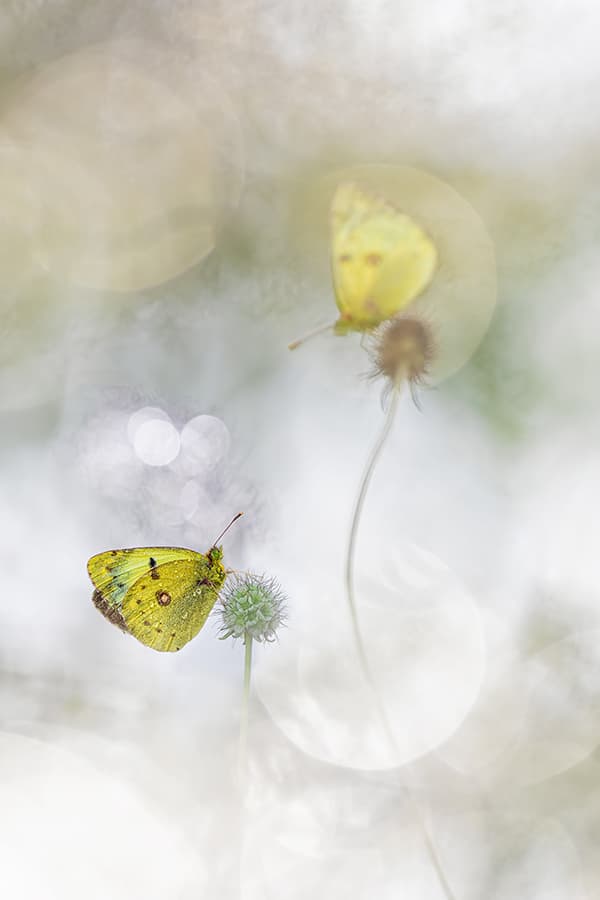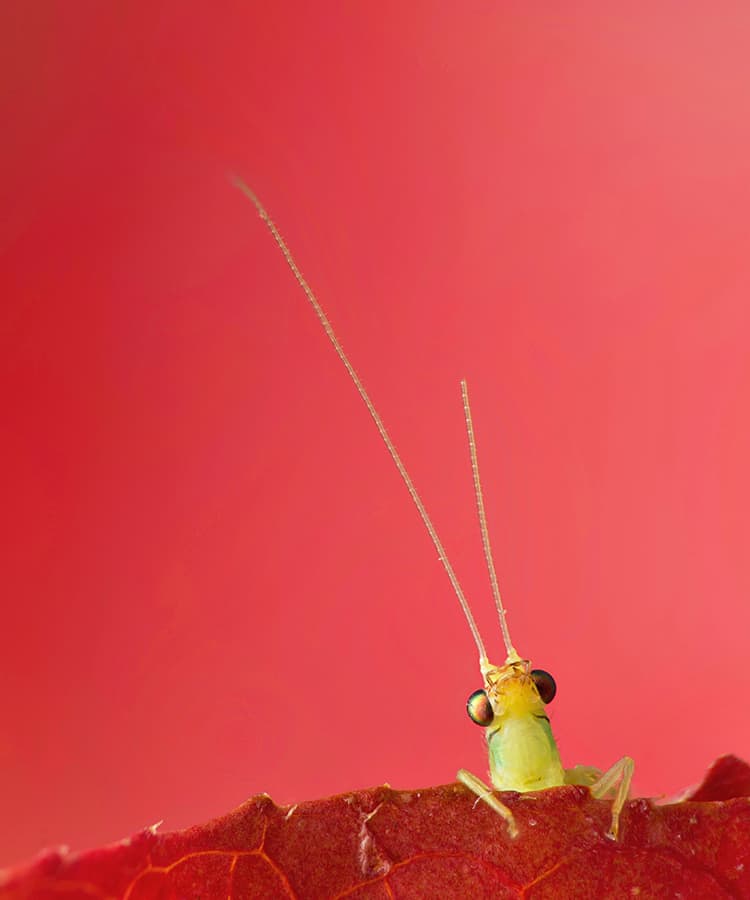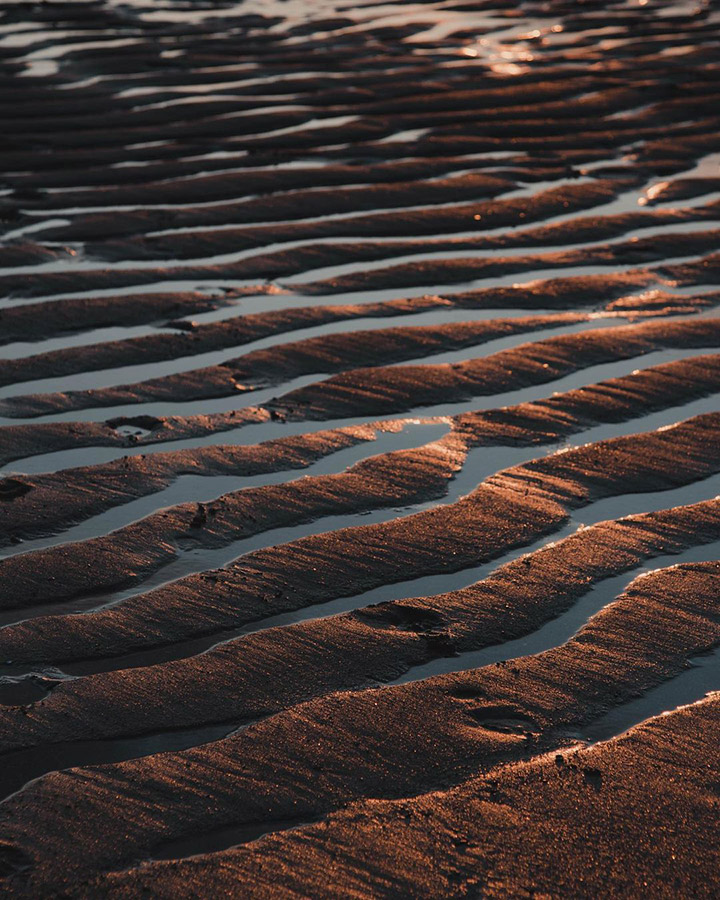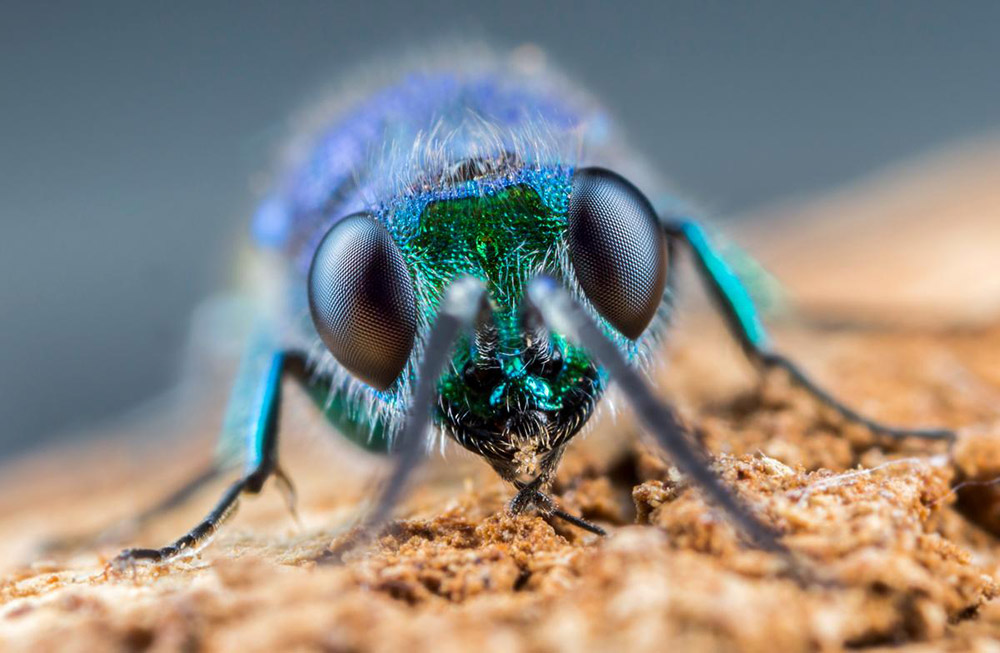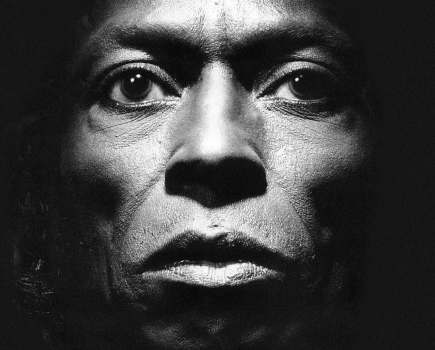Macro photography is one of the most popular genres of photography, and one of the most rewarding. The magic of macro photography is that it gives us a view of the world that we never normally see. The intricacies and beauty of a butterfly wing or the alien-like features of a spider all come alive when viewed in close-up.
Subjects can be found anywhere from inside our own homes, gardens and of course, the great outdoors. We share some of the best close-up photographs as inspiration for your next close-up or macro shots:
The Best Close-Up and Macro Photographs
Hemitriachia calyucata by Nathan Benstead
Nathan was the Young Close-up Photographer of the Year winner of the CUPOTY 04, 2022 competition.
Last winter, I was walking through my local woodland, inspecting rotten logs and sticks, when I came across a log covered in slime mould fruiting bodies or sporangia. I set up my camera gear and focused on a small cluster among the moss.
Little Predator by Viktor Lyagushkin

Little Predator. Photo credit: Viktor Lyagushkin/CUPOTY. Nikon D850, Nikkor 8-15mm f/3.5-4.5 Fisheye, 1/80sec at f/13, ISO 3200.
Viktor was the ‘Underwater’ category winner of the CUPOTY 04 (2022) competition.
This is a Lucernaria quadricornis (Stauromedusae), a stalked jellyfish, photographed beneath the ice of the White Sea in Russia – the only freezing sea in Europe. The green colour of the water is a sign of spring as algae grows. ‘The “leg” of the jellyfish helps it to attach to a stone or seaweed. Its tentacles project up or down, waiting for prey. If its hunt is successful, it catches the prey and collapses its tentacles into a fist. If the hunting site is no good, Lucernaria walks away on its “leg” or sometimes its “hands”.
Batrachospermum Algae by Marek Miś
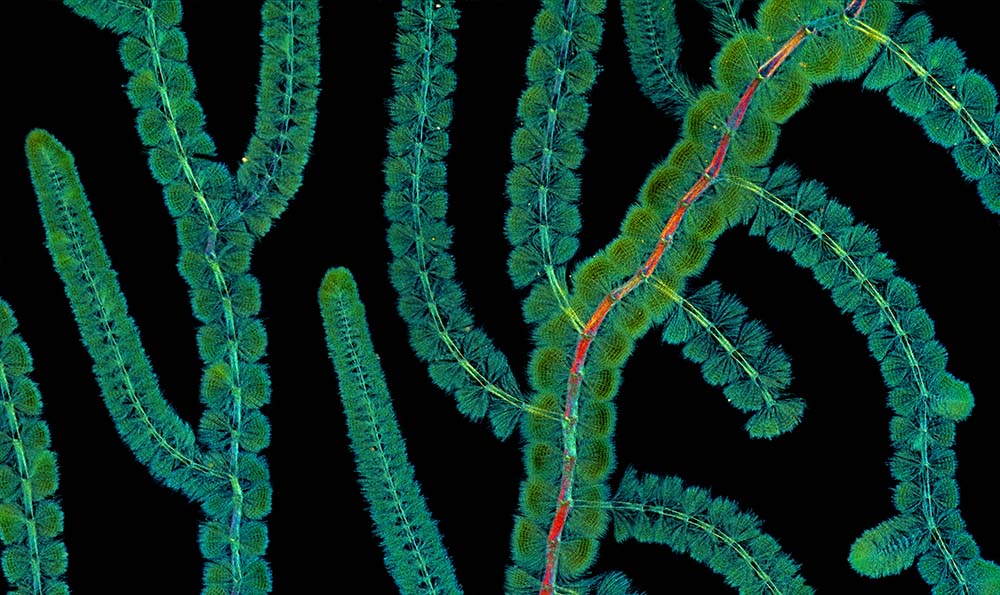
Batrachospermum red algae. Photo credit: Marek Miś. Pentax K-1, Olympus 4x S-plan Apo objective, 1/5sec, ISO 100.
Marek was the ‘Micro’ category winner of CUPOTY 04 (2022 competition).
I took a sample of Batrachospermum (a kind of red algae) from a small river in Wigry National Park, Poland. Although it has natural beauty, it doesn’t look great using bright-field illumination. However, by combining polarised light and darkfield techniques I managed to get a colourful and interesting picture.
‘It was challenging to show more than one or two “twigs” of algae, because even a 4x microscope objective shows too small a part. To capture it properly, I made a panorama consisting of nine images stitched together during post-processing. To expand the depth of field, which is very shallow using a microscope, each of the nine images consist of several frames combined in one output image in Helicon Focus. The final image is the result of combining more than 100 separate shots.
Nature’s Pitfall by Samantha Stephens
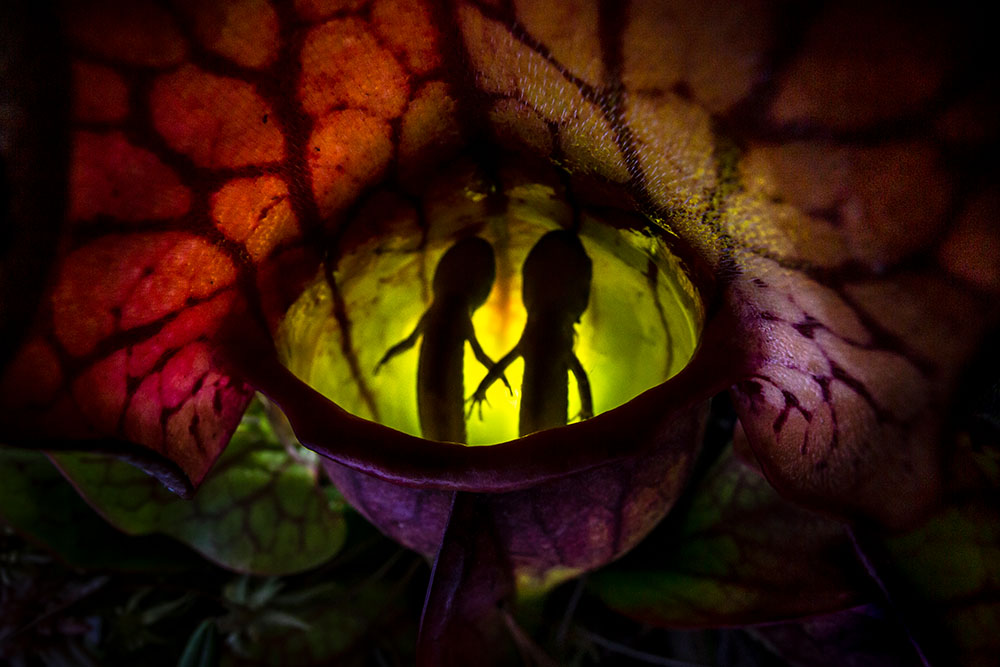
Nature’s Pitfall. Photo credit: Samantha Stephenson. Canon EOS 5D Mark III, Laowa 15mm f/4 macro lens,1/100sec, ISO 1250.
Samantha was the Overall and ‘Animals’ category winner of CUPOTY 04 (2022 competition).
Northern pitcher plants (Sarracenia purpurea) are carnivorous, allowing them to survive in nutrient-poor bog environments. Here there is no rich soil, but rather a floating mat of sphagnum moss. Instead of drawing nutrients up through their roots, this plant relies on trapping prey in its specialised bell-shaped leaves, called pitchers.
Typically, these plants feast on invertebrates – such as moths and flies – but recently, researchers at the Algonquin Wildlife Research Station discovered a surprising new item on the plant’s menu: juvenile spotted salamanders (Ambystoma maculatum). This population of northern pitcher plants in Algonquin Provincial Park is the first to be found regularly consuming a vertebrate prey. For a plant that’s used to capturing tiny invertebrates, a juvenile spotted salamander is a hefty feast!
On the day I made this image, I was following researchers on their daily surveys of the plants. Pitchers typically contain just one salamander prey at a time, although occasionally they catch multiple salamanders simultaneously. When I saw a pitcher that had two salamanders, both at the same stage of decay floating at the surface of the pitcher’s fluid, I knew it was a special and fleeting moment. The next day, both salamanders had sunk to the bottom of the pitcher.
Ice Encrusted Comatricha by Barry Webb

Ice Encrusted Comatricha. Photo credit: Barry Webb. Olympus OM-D E-M1 Mark II, Olympus M.Zuiko Digital ED 60mm f/2.8 Macro, 1/15sec at f/4, ISO 200.
Barry was the ‘Fungi’ category winner of CUPOTY 04 (2022) competition.
In January last year, following two days of freezing fog and sub-zero temperatures, I found some mature Comatricha growing on an old fence post lying on a pile of discarded, rotting timber. I was attracted to the way the ice had encased the slime mould, creating strange, windswept, leaf-like shapes. The tallest one was only 3mm high, including the ice. The final image is the result of 55 focus-bracketed images combined in Zerene Stacker.
Mayan Derriere by Jamie Hall

Mayan Derriere. Photo credit: Jamie Hall. Canon EOS 5D Mark IV, Sigma 105mm f/2.8 lens, 1/100sec at f/10, ISO 320.
Jamie was the ‘Invertebrate Portrait’ category winner of CUPOTY 04 (2022 competition).
This triangular spider species (Arkys curtulus) is an ambush predator, not a web-based hunter like most. To hunt its prey, it sits compact and curled up on a leaf, mimicking bird poo or other bio-debris. Balanced abdomen-side down, eyes up, it looks to the sky and watches for an unsuspecting fly or other insect to wander onto the leaf.
The abdomen on this species has some very pronounced and interesting markings, which reminded me of the Mayan carvings on rocks and stone. This individual was photographed in a conservation park in Brisbane, Australia.
@jamie_hall_definitive_imaging
Veiled by Wim Voojs
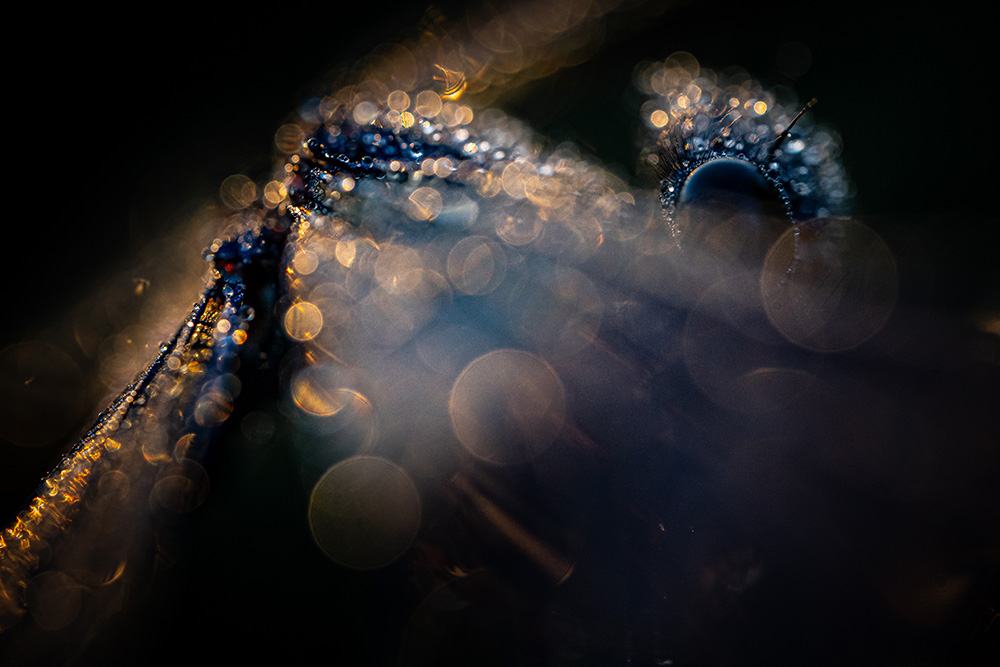
Veiled. Photo credit: Wim Voojs. Sony A7III, Laowa 100mm f/2.8 2x Ultra-Macro, 1/500sec at f/2.8, ISO 500.
Wim was the ‘Butterflies & Dragonflies’ category winner of CUPOTY 04 (2022 competition).
I found this dew-covered male banded demoiselle on a reed stem among the streams near my hometown, Ede in the Netherlands. Banded demoiselles are easy to approach as they rest and dry in the early morning. I tried to find an angle that would produce bokeh bubbles in the warm light, creating the atmosphere that I desired in the picture.
I like to emphasise the beauty of these insects by showing their strength and vulnerability. I’m not after a record shot, more an emotional portrait – maybe this is due to my background as a portrait photographer.
Macro photography: how to shoot insects
Oil & Water 44 by Matt Vacca
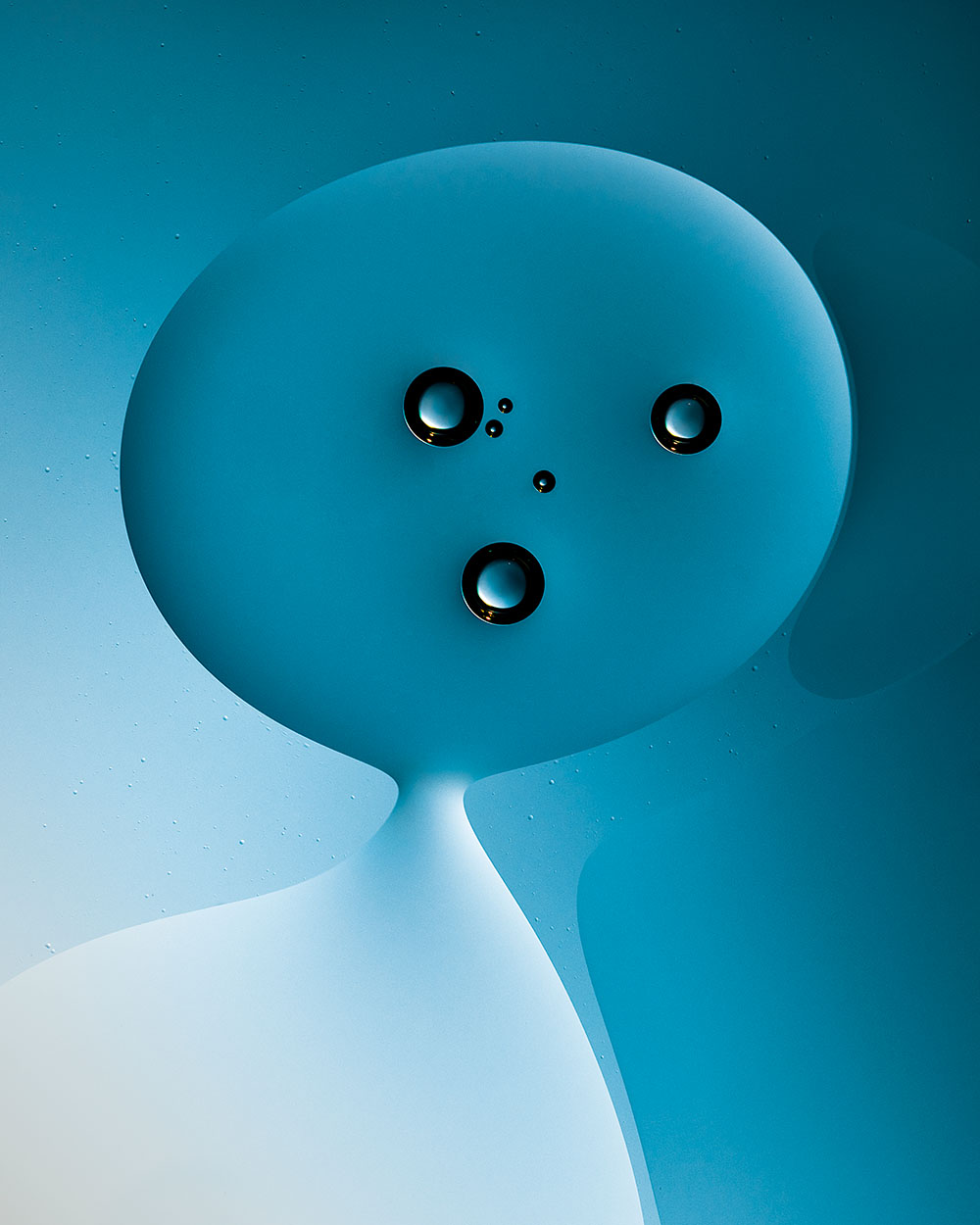
Oil & Water 44. Photo credit: Matt Vacca. Nikon D850, Nikon AF-S Micro-Nikkor 60mm f/2.8 lens, 1/160sec at f/5, ISO 200.
Matt was the ‘Manmade’ category winner of CUPOTY 04 (2022 competition).
This picture was captured as two drops of oil were merging. I’m intrigued by polarity and experimenting with oil and water has become a rich source of abstract expression. The symbiotic relationship that evolves from naturally opposing elements has become metaphoric for me. I am constantly learning and finding new inspiration, as I watch and continue to be fascinated by the dance that plays out through a macro lens.
Everyday objects as alternative macro subjects
Next to my Tree by Sébastien Blomme
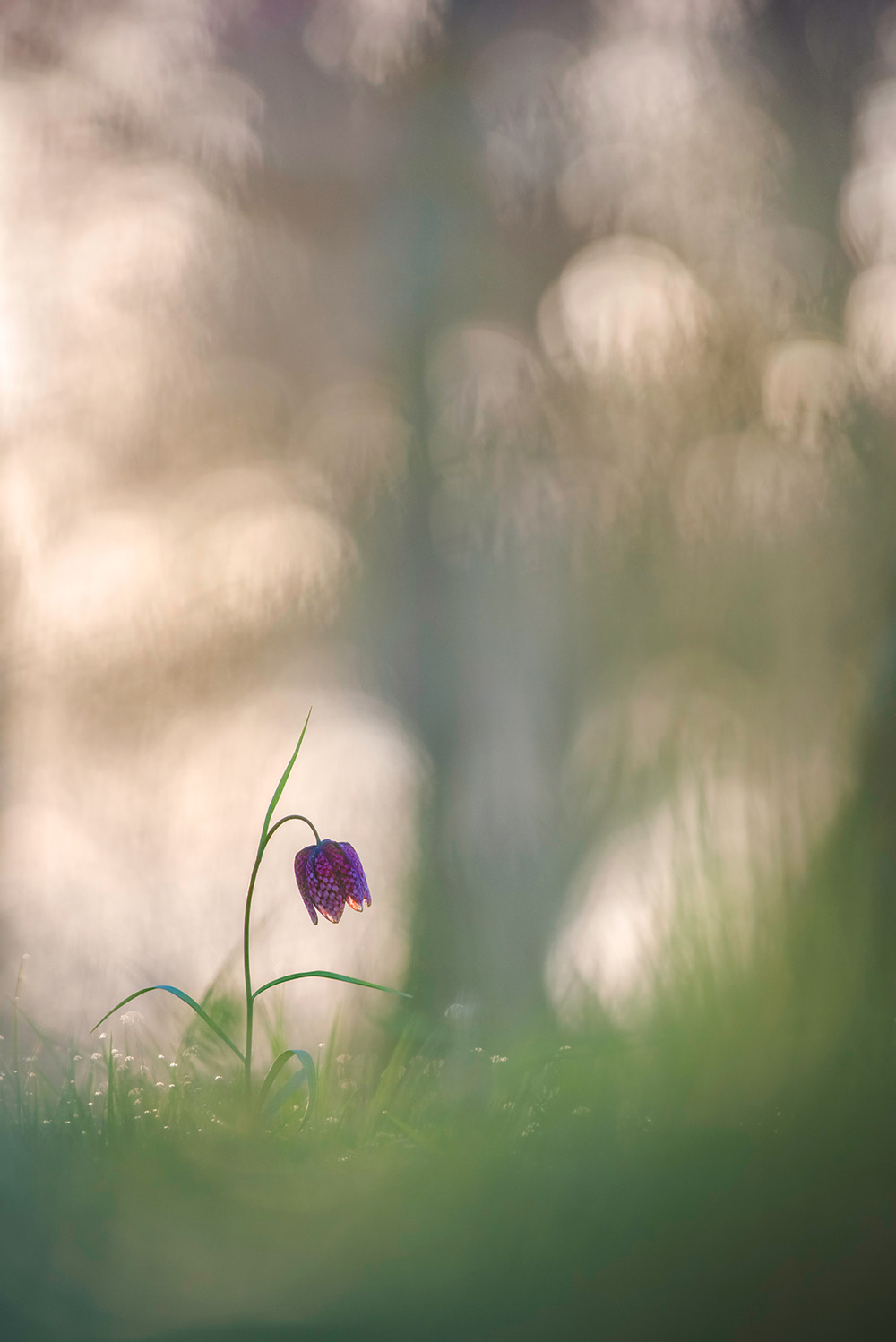
Next to my tree. Photo credit: Sébastien Blomme. Pentax K-1, Pentax DA 300mm, 1/250sec at f/4, ISO 800.
Sébastien was the ‘Plants’ category winner of CUPOTY 04 (2022 competition).
Snake’s-head fritillary is one of my favourite flowers. This one was taken in the city of Toulouse, France. It usually grows on wet meadows but can also be found in forests. In this image, I wanted to introduce some context, but keep the flower as the centre of interest. I managed to get a tree in the background and decided to keep it out of focus so that its shape is only suggested.
Top macro flower photography tips
Intruder by Anirban Dutta
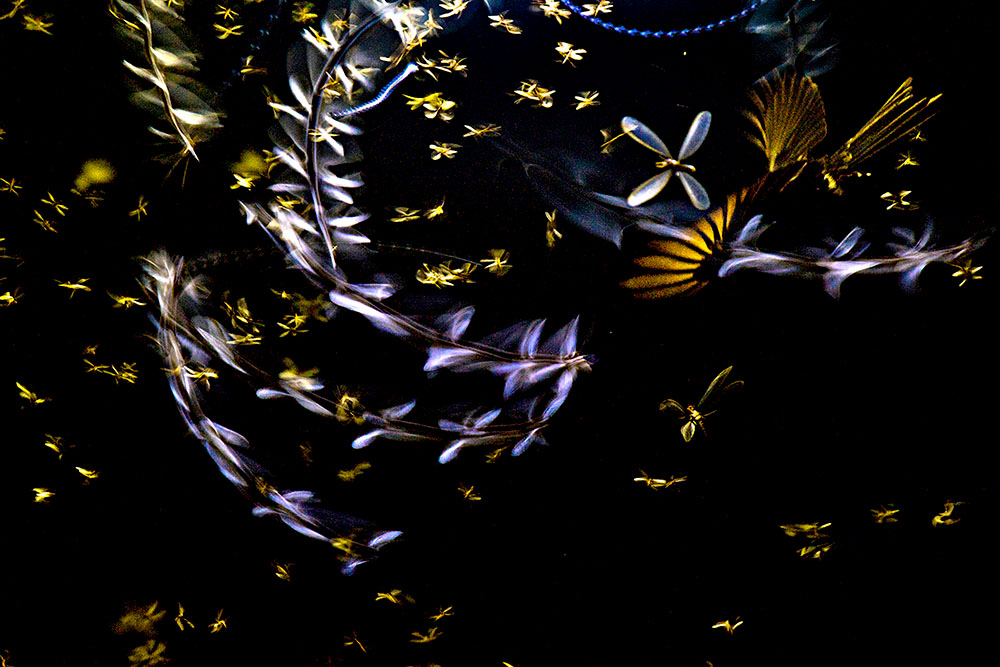
Intruder. Photo credit: Anirban Dutta. Nikon D500, Nikkor 200-500mm f/5.6 lens, 1/5sec at f/32, ISO 800.
Anirban was the ‘Insects’ category winner of CUPOTY 04 (2022 competition).
Before the start of the monsoon every year, some species of termite swarm in the late afternoon and early evening – this behaviour is known as nuptial flight. One day, I witnessed this event near a petrol pump in the town of Cooch Behar, India.
There were thousands of termites drawn to the powerful street light, and one black drongo. This bird spent almost 20 minutes swooping through the termites, snatching and eating them as it went. ‘I shot multiple exposures to capture this event, which I had never seen before. Three frames were recorded and combined in-camera. The first one with a high shutter speed and in Kelvin white balance, the second with a high shutter speed isolating the drongo and the third with a slow shutter speed in Tungsten white balance.
Frequency by Mike Curry

Frequency. Photo credit: Mike Curry. Sony DSC-RX100 VI, 24-200mm (fixed), 1/250sec at f/4.5, ISO 125.
Mike was the ‘Intimate Landscape’ category winner of CUPOTY 04 (2022 competition).
This is a reflection of a building at Canary Wharf in London taken in November. The water was moving in a very fluid way and I was there to try out my new Sony DSC-RX100M6 – I was particularly keen to test the camera’s fast burst and slow motion video modes. I was struggling to get it to focus on the water’s surface, but after about two hours of failed attempts it suddenly worked, and the results were amazing!
Porcelain Fungus by Guy Edwardes
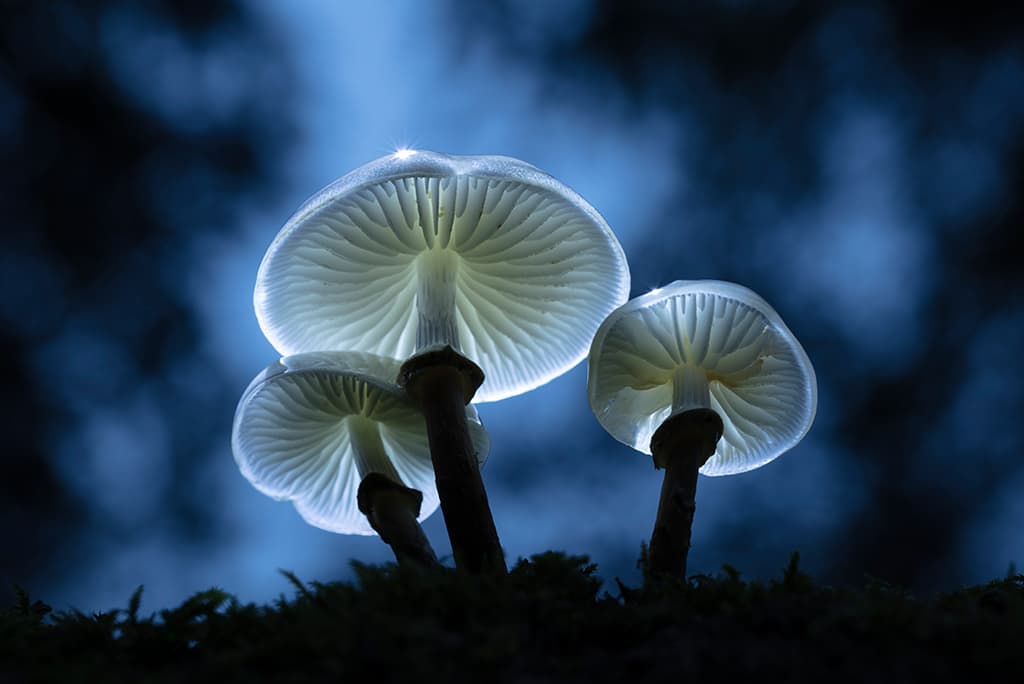
Guy Edwardes. Porcelain Fungus (Oudemansiella mucida), New Forest National Park, Hampshire, England. Canon EOS 5DS R, 100mm, 1/6sec at f/11, ISO 100
‘These porcelain fungus were in nice condition, but I came across them late in the day. I used my 100mm macro lens to shoot them from beneath against the distant treetops, so their gills were clearly visible. I exposed to keep the sky dark and then used my two LED light panels to backlight them from above.’
See more fantastic examples from Guy here: How to take fantastic photos of fungi
Anemone by Sue Bishop
Sue Bishop’s macro photograph of a Anemone flower draws us to the intricate details at the centre of the flower, capturing a richness of colour and each individual element with spot on focussing surrounded by the softness of petals.
Sue Bishop specialises in flower and landscape photography, is an author and has exhibited her work many times and sold her images worldwide. You can see more of her top macro flower photography tips here.
From the series Plant Scars by Tracy Calder
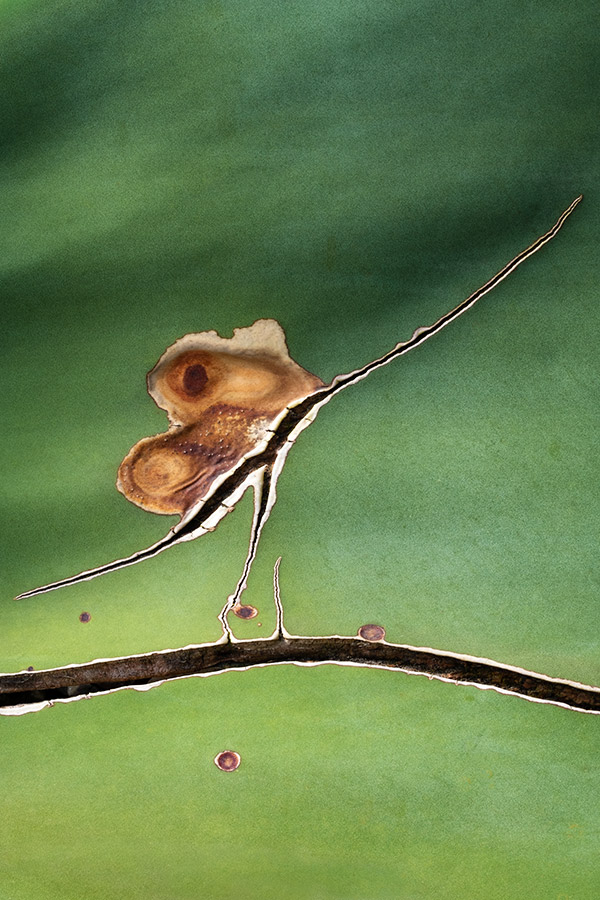
This mark in the leaf made me think of a butterfly balancing on a tightrope 2.3 sec at f/16, ISO 200. Tracy Calder
Tracy Calder co-founded Close-up Photographer of the Year – a competition celebrating close-up, macro and micro photography – with her husband in 2018. She has written numerous photography books and her work has appeared on the walls of The Photographers’ Gallery and The National Portrait Gallery in London.
She recently was awarded a RHS Gold Medal at RHS Botanical Art and Photography Show with her portfolio Plant Scars.
‘In June 2021, when the first coronavirus lockdown ended in the UK, I paid a visit to Ventnor Botanic Garden on the Isle of Wight. This location has provided solace for me many times – I swear there is some sort of magic in the ferns, palms and herbs there. Walking through the Arid Garden (home to desert-loving plants like agaves and aloes), I spotted the leaf of an agave drooping over the path.
There was a gash in the leaf, lined with tooth-like notches. Just above it was a patch of circular damage that looked like some sort of all-seeing-eye. At that moment, the seed of a photographic project started growing in my mind. As I stood in the shadow of this beautiful, but damaged, plant I wondered if it had its own language, and whether there was anything I could learn from it.’
See Calder’s advice for creating a successful photography portfolio here.
True Love by Alex Pansier
Alex Pansier won the 2021 CUPOTY Two of A Kind challenge!
‘European ground squirrels are classified as vulnerable, mainly due to habitat loss. These two were busy eating a faded poppy on a lawn in Vienna. I really enjoyed watching them working together, like father and son. For me, observing and photographing nature is a great way to unwind and share the beauty that’s all around us. I prefer compositions that are simple and pared back, and I usually shoot on dark and moody days, although this image has a lighter feel.’
Close-up tips from Two of a Kind CUPOTY Challenge winners
Mature Comatricha by Barry Webb
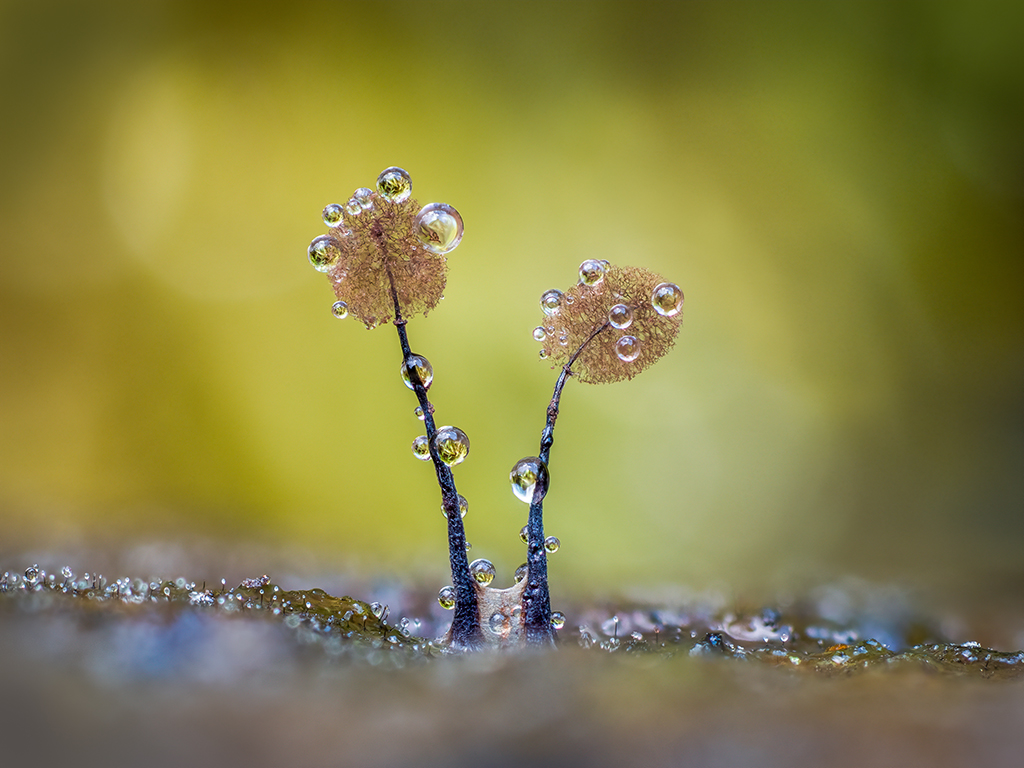
Barry Webb. Olympus OM-D E-M1 Mark II, Olympus 60mm f/2.8 Macro (with extension tubes and Raynox 250), 1/5sec at f/4, ISO 200. Gitzo Explorer tripod and cable release
Barry Webb came second place in the 2021 CUPOTY Two of a Kind challenge with this duo of slime moulds.
‘These tiny (2mm tall) slime moulds were found on a dead apple branch, from a log pile in my back garden in Buckinghamshire. The spores have dispersed, leaving the delicate, thread-like capillitium. I carefully lifted the branch onto a garden bench and arranged some moss behind it to create a pleasing, natural background. The picture was taken in natural light and is the result of a 56-shot focus stack.’
Close-up tips from Two of a Kind CUPOTY Challenge winners
The Kiss by Angi Wallace
Angi Wallace was a finalist in the CUPOTY Two of a Kind challenge.
‘The details and pretty textures on the buds, leaves and unfurling flowers of the cyclamen in my garden really appealed to me. In this instance, the little nodding heads were forming a wonderful heart shape. I decided to isolate the blooms while keeping the surroundings soft and dreamy.’
Insect Diversity by Pål Hermansen
Norwegian photographer Pål Hermansen won CUPOTY 03 (2021 competition) with this insect flat lay.
‘In the autumn of 2020, I discovered that one of the lamps on the side of my house in Norway had a defect and had acted as a light trap for insects. I emptied the lamp and spread the contents onto a large light-table I had left over from my days shooting slides. I used a weak flashlight to light the details from above.
I wanted to express the chaos and diversity of this discovery, but also to find some kind of composition. To me, it’s a visual reminder of the important and extreme diversity of animals around us that we take for granted.’
Technical Editor, Andy Westlake, selected Hermansen’s photograph as his favourite of 2021. Talking about the photograph he said, on the surface this photo is ‘a perfectly constructed still-life flat lay, that invites us to consider the readily overlooked beauty and variety of some of the smaller animals with which we share the planet. The artist has worked wonders in extracting order from chaos, with the carefully constructed composition complemented by a subtle colour palette of yellows and ochres.
But a deeper level of meaning is added by the revelation that all of these insects were trapped in a lamp at his home. It’s a timely reminder for us all to take a step back and contemplate the impacts our lives and habits might have on the natural world, inadvertent as well as deliberate, and to consider what we might do better in future.’
Behind the scenes of Close-up Photographer of the Year 03 Images
Urban Beach Day by Jennifer McKinnon
Jennifer McKinnon spends much of the year searching the streets of Atlanta for dumpsters, the subject of her macro photographs. At first, she was attracted to them due to their unusual (and aesthetically pleasing) markings – a result of natural and unnatural weathering – but over time she came to realise that her images could be used to highlight the impact that waste and consumption has on the natural world.
Her early ‘dumpster abstracts’ such as this have instant graphic appeal: bands of colour sweep across the frame giving them the air of contemporary paintings. You certainly wouldn’t expect this to be a close-up photo of a dumpster!
Everyday objects as alternative macro subjects
Circular Octopus by Alessandro Grasso
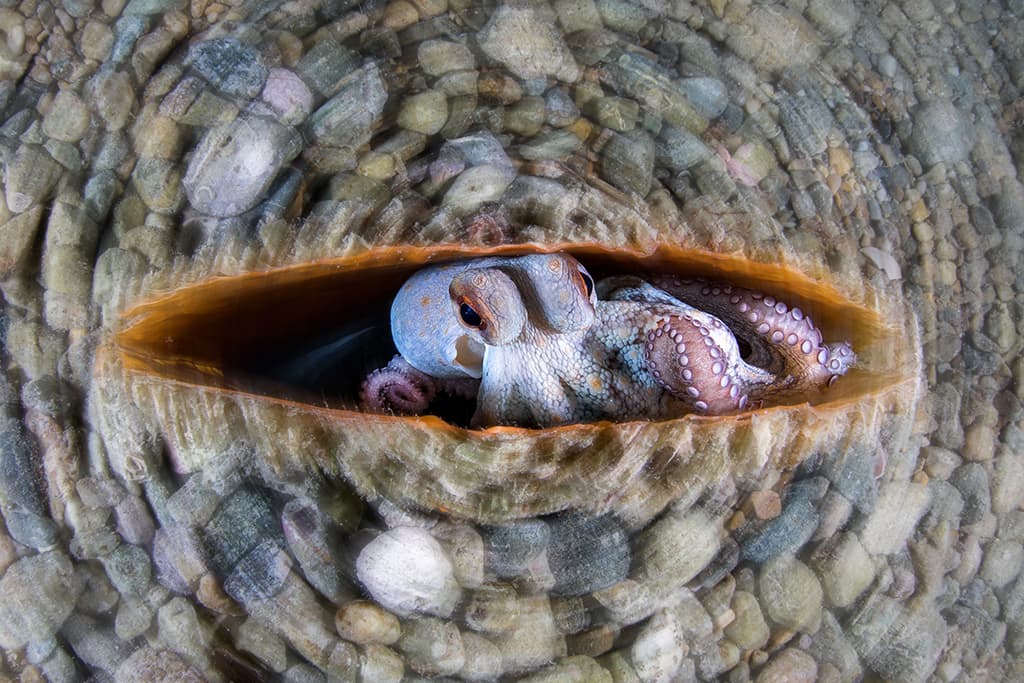
Alessandro Grasso. Canon EOS 5D Mark IV, Sigma 15mm f/2.8 EX DG Diagonal Fisheye, 1/13sec at f/22, ISO 160
Alessandro Gasso was the Underwater category winner of CUPOTY 03 (2021 competition) with his Circular Octopus photograph.
‘In the past three years, the bacterium mycobacterium sherrisii has caused the mass death of pinna nobilis (noble pen shell) throughout the Mediterranean Sea. Most of the empty shells of the large bivalve have been colonised by other marine species.
In this case, an octopus has taken advantage of the large shell to create its den and protect itself from predators. I used a slow shutter speed and circular panning motion to give dynamism to the image and emphasise the subject.’
At a quick glance the photograph could also be mistaken for an eye, before looking closer to see the octopus looking right back at us.
Behind the scenes of Close-up Photographer of the Year 03 Images
Eel Larva by Galice Hoarau
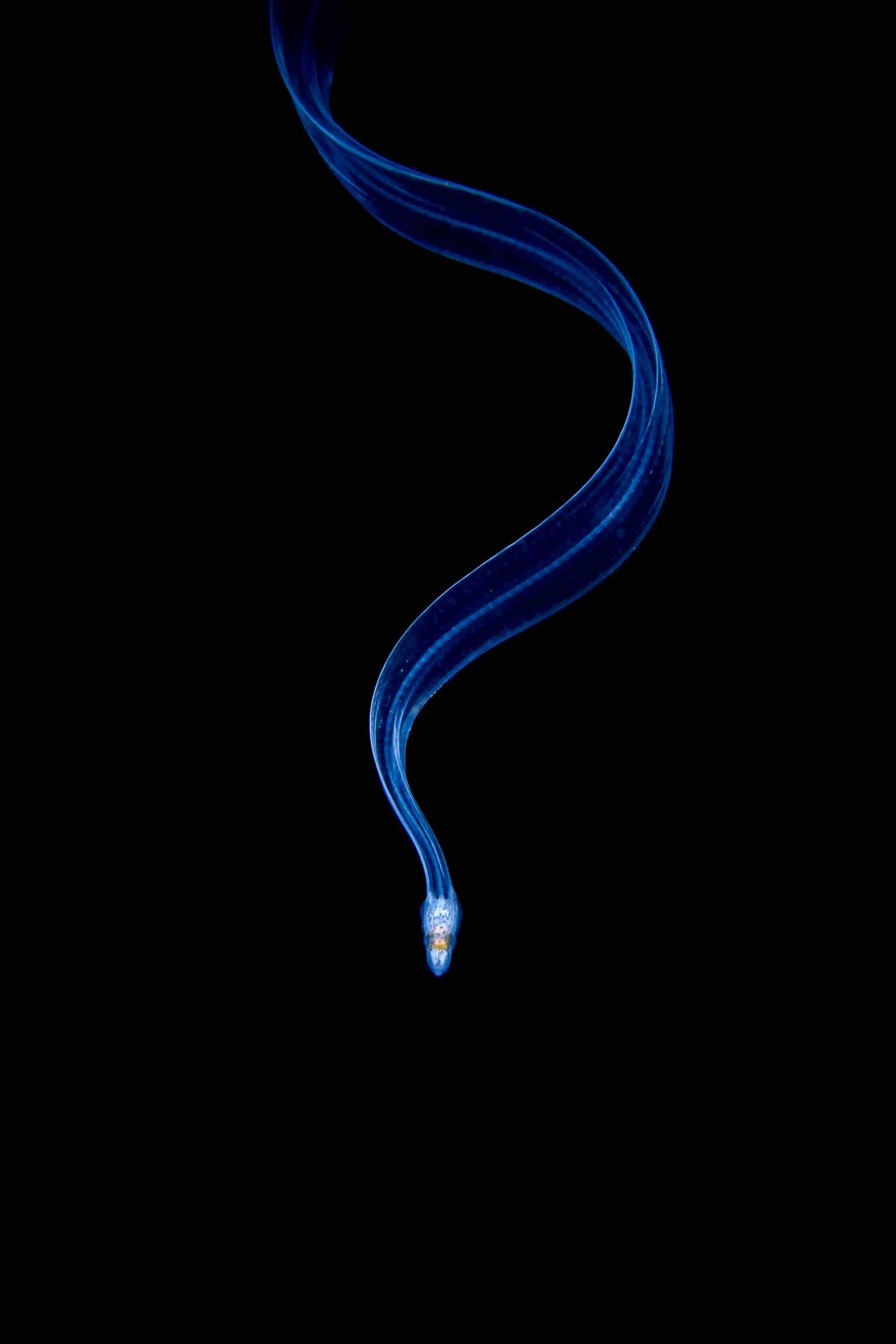
Galice Hoarau. Olympus E-M1 Mk II, Olympus 30mm Macro, ISO 400, f/16
1/320sec. Accessories: Nauticam underwater housing, 2x Inon Z-330 strobes, 2x Sola lights
Hoarau was the overall winner and took first place in the animals category of CUPOTY 02 (2020 competition)
‘I spotted this eel larva off the island of Lembeh (Indonesia) during a blackwater dive. Blackwater diving is essentially diving at night in the open ocean, usually over deep or very deep water. Divers are surrounded by darkness, with only a lit downline as a visual reference.
Peering through the darkness with your torch can be stressful the first time you do it, but it gets fascinating quickly’ explains Hoarau, a professor in marine molecular ecology. ‘After sunset, small pelagic animals (like this larva) rise close to the surface to feed where the sunlight has allowed planktonic algae to grow. At sunrise, they dive into the depths and stay there during the day to escape predators.’
Close-up Photography of the Year winners revealed
Little Ball by Tamas Koncz Bisztricz
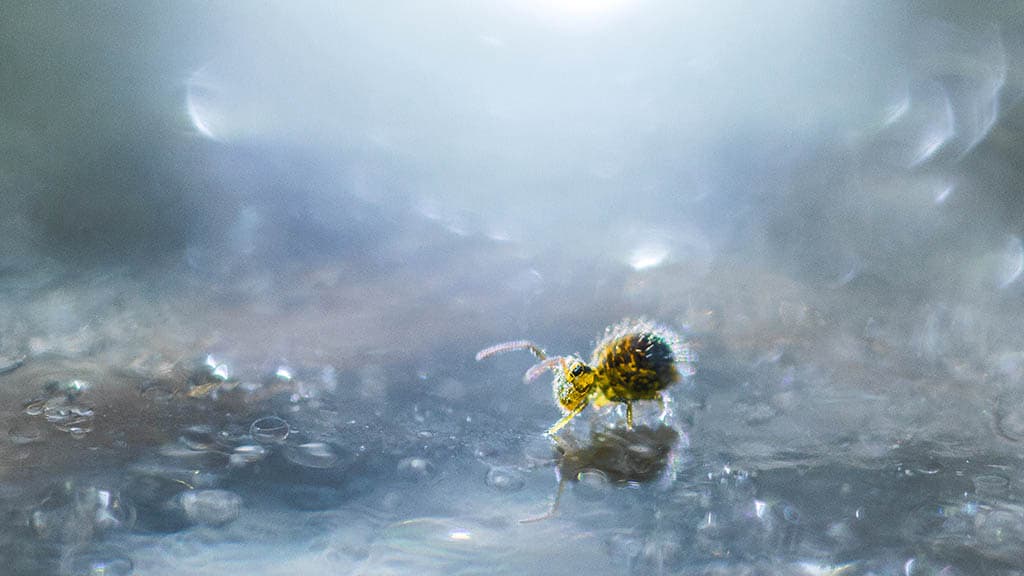
Tamas Koncz-Bisztricz. Canon EOS 7D Mk II, Canon MP-E 65mm Macro, ISO 800, f/4.5, 1/250 sec. LED torches
The Young Close-up Photographer of the Year in 2020 attracted some strong entries with Tamás Koncz-Bisztricz winning the overall title for a shot of a springtail in a meadow close to his home in Hungary. ‘One frosty winter’s morning I headed out to take some extreme macro shots at the surface of some frozen water that had pooled in the tracks left by a tractor, he explains. ‘Crouching down, I spotted some yellow globular springtails which were feeding in the sunrays reflected from the ice. I used LED torches to illuminate one of them, and came away with a picture that celebrates this tiny creature.’
Close-up Photography of the Year winners revealed
Namib’s Gaze by Emanuele Biggi
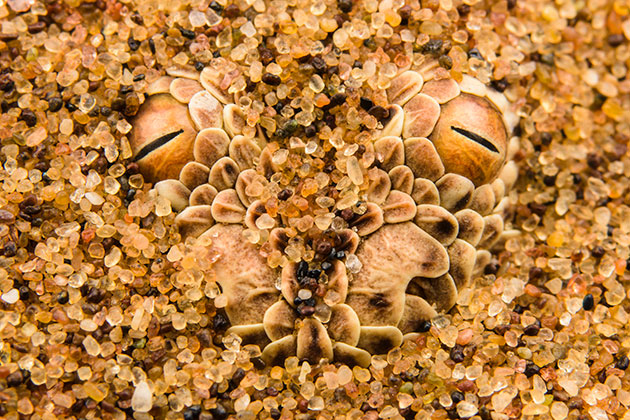
Credit: Emanuele Biggi. Nikon D810, Nikon AF-S 60mm f/2.8 Macro, ISO 100, 1/250sec at f/16. Accessories: Flashes with custom-made diffusers, flash bracket.
Emanuele Biggi was the first-ever Close-up Photographer of the Year overall winner, and came first place in the Animals category. This photograph looks like a beautiful array of crystals and glitter until you clock two well camouflaged eyes looking back at you.
‘Finding a Peringuey’s adder (Bitis peringueyi) in the Namib Desert isn’t easy. I followed its tracks during the early morning, and eventually found one under a shrub with its eyes poking out. This adder is small – the diameter of each eye is about 2-3mm, so even though I knew it was there, it was still hard to spot! This species relies on camouflage to hunt and uses a sit-and-wait technique, leaving its nostrils and eyes above ground for breathing and scanning around. When prey comes near, the snake strikes and delivers a venomous bite.’
Expert tips for award-winning macro shots
Winter Oakmoss by Jane Simmonds
‘I enjoy using my phone to make abstract images of the things I collect on my daily walks in the Forest of Dean. Back in January, on a dreary winter’s day, I was drawn to the delicate, branched shapes and silvery colour of the oakmoss lichen I saw on the twigs and branches. I picked up a few pieces that had been blown to the ground and took them home.
I normally use a light pad to photograph the things I collect, but this approach didn’t work with the lichen so I placed it on a piece of slate tile (which produced a nice textured background) instead. I made a series of images using my iPhone and then experimented with blending them “in-camera” using the PhotoSplit app, which has a multiple exposure mode. I tried various blending modes before achieving this look.’
An impressive and creative capture on a smartphone, proving the best camera you have is the one you have on you!
Expert tips for award-winning macro shots
Stormy Skies by Rachel McNulty
Rachel McNulty embarked on a home-based project to create abstract ‘seascapes’ using colourful glass bottles, a macro lens and daylight. The dining room table became her studio and the sunlight entering the room enhanced the colours and created incredible reflections inside the bottles.
‘When I looked through the viewfinder, I suddenly saw waves crashing on a beach, storm clouds out at sea and dramatic sunsets,’ she told us. ‘No two images will ever be the same: the light changes, the position of the bottle moves and the reflections shift, just like a real seascape constantly alters.’
This photograph shows details in a glass bottle but gives the impression of a dramatic sky above a calm blue sea.
In 2021 her image ‘Waves Crashing’ (featuring a section of a blue gin bottle) won the Manmade category of Close-up Photographer of the Year, which was also selected by Technique Editor, Hollie Latham Hucker for our best photographs of 2021 list.
Everyday objects as alternative macro subjects
Clouded Beauties by Henrik Spranz
Henrik Spranz won our Close-Up round of APOY 2021. About the image, guest judge Tracy Calder said: ‘This image ticks all the right boxes for me: excellent fieldcraft skills, beautifully balanced composition, superb technical ability and wonderful storytelling. The butterfly in the foreground is staggeringly sharp, which works brilliantly against the soft, dreamy bokeh.
The background butterfly has enough detail for us to know that it’s a second clouded yellow and the inclusion of the plant stems stops the insects from looking as if they are floating in mid-air. The gap between the two butterflies is perfect and the way that they are facing each other seems to imply there is a silent exchange going on.
The picture feels like a true celebration of this particular species – there are some beautiful shapes and highlights in the frame, which make it feel as though the butterflies are stars on a grand, natural stage. It’s an absolutely beautiful image that makes me extremely jealous it’s not mine!’
Nigella Flower in Evening Light by Molly Hollman
Molly Hollman was awarded sixth place in our APOY 2021 Close-Up round.
Some flowers simply demand to be studied in close-up, and nigella – or love-in-a-mist – is one of them. Molly has done an outstanding job of drawing our attention to the tutu-like shape of the petals and stamen, and has chosen just the right angle to frame it with the delicate green bracts.
By chance, the background was provided by her son, whose T-shirt provided the perfect complement to the flower. Molly spotted its potential as her son walked past, which demonstrates a well-tuned and responsive photographer’s eye.
Peek-A-Boo by Gustav Parenmark
Gustav Parenmark was our Young APOY 2021 Close-up round winner.
Positioning the lacewing in the bottom right of the composition works wonderfully here, as does the striking colour combination. The damage to the insect’s antenna makes no difference to the impact of the picture – in fact, it signifies this is a living breathing creature, with all its flaws and scars. Beautifully observed and expertly captured.
All things texture at the beach by Billy Hughes
This golden sand photograph was shared with us by Billy Hughes on Instagram. The colours and contrasts are beautifully captured whilst composed perfectly as an intimate landscape which could also looking like larger sand dunes across a larger landscape.
The footprint in the sand is a subtle detail, as we leave our mark.
Portrait of a ruby-tailed wasp by Matt Doogue
A macro lens allows you access to a hidden world the human eye never sees, a world full of detail, colour and design. Focus stacking particularly enables you to see intricate details of tiny subjects. Matt Doogue’s image is a great example of the details you can achieve.
Find out how you can get started here with Focus stacking: How to achieve pin sharp macro shots.
Bonnie’s Eye by Nick Pollard
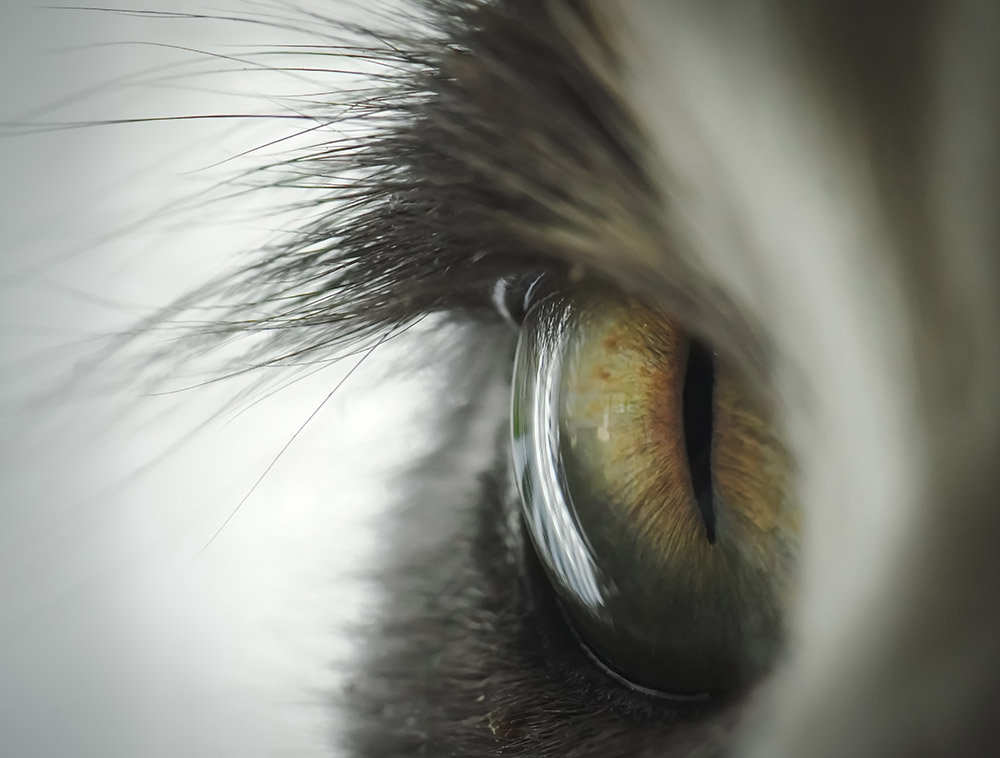
Nick Pollard. Sony A6400, Sony 70-350mm lens at 207mm with NiSi Macro Filter, 1/200 sec at f/14, ISO 3200
Nick Pollard’s photograph was included in our Good to Share section of the magazine in our 15th January 2022 issue.
‘Photography and I have had a love/hate relationship. I love it, it hates me… until recently, when after an impulse buy on an Sony A6400 I finally made sense of the whole exposure triangle (thanks YouTube) and started getting some reasonable shots. My partner and I ‘collect’ cats and we have 8 living with us which gives me a constant stream of opportunities to take photographs. Armed with a recent purchase of a NISI Macro Filter I ascended on Bonnie who was pleasantly sitting by the window in our Kitchen and I started taking shots. After managing to get the focus and DOF just right luck was on my side and photography finally loved me back’
Get more inspiration & tips
Feeling inspired? View our Top close-up photography tips, and learn how to light your subject so you can get shooting some spectacular shots!
If you are new to macro photography, check out our beginners guide to Macro Photography.
Related Reading:
- The top 20 best landscape photographs
- See the top 20 best travel photographs!
- Using your smartphone for macro photography
Follow AP on Facebook, Twitter, Instagram, and YouTube.

